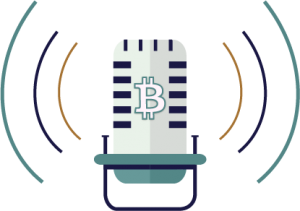
The Cryptocurrency Informer
A Possible New BCH Fork; Attack(s) on ETC; Bitcoin Billionaire Transfer; Twitter Hacker Revealed
Today’s episode will cover events happening the week ending August 7th, 2020. We will be talking about a potential new BCH split, a 51% attack on ETC, a whale of a Bitcoin transfer, and the Twitter hacker has been revealed – we’ll discuss how his identity was discovered!
More information on each of these topics can be found below.
More Information
August 7th, 2020: A Possible New BCH Fork; Attack(s) on ETC; Bitcoin Billionaire Transfer; Twitter Hacker Revealed
(00:39) First up, Bitcoin Cash (BCH). For those unfamiliar, Bitcoin Cash is a cryptocurrency that exists as a result of an August 2017 fork from the original Bitcoin. Subsequently, in 2018, BCH was forked into two different versions of the coin; for all intents and purposes, these two resulting coins are named Bitcoin ABC (Adjustable Blocksize Cap) and Bitcoin SV (Satoshi’s Vision). It can be a bit confusing but, as Coinmarketcap says, “Bitcoin ABC became the dominant chain and took over the BCH ticker”. So, when we discuss BCH, we are referring to Bitcoin ABC. Bitcoin SV is referred to as BSV.
Both the 2017 and 2018 forks were largely a result of disagreements among the miners, developers, and supporters of the cryptocurrency and the underlying blockchain technology. BCH, historically then, is somewhat fraught with disagreement between camps.
The history here matters because it seems to be potentially repeating itself once again, and a new BCH fork is possible (depending on who you ask). On Thursday, Amaury Séchet, a leading developer of BCH, released a blog post detailing the plan for a November 2020 Bitcoin Cash Network Upgrade. The plan lists “two primary improvements… a change to the Difficulty Adjustment Algorithm…[and]…the addition of a new Coinbase Rule…[which states that] all newly mined blocks must contain an output assigning 8% of the newly mined coins to a specified address.” According to Séchet, the rule “fully aligns the incentives of Bitcoin ABC with the sustainability and security of the network…[and] ensures that those developers risk the immediate loss of their own wealth should they make decisions that harm the overall value and validity of the network.” Séchet closes his plan by stating “While some may prefer that Bitcoin ABC did not implement this improvement, this announcement is not an invitation for debate”.
This did not sit well with everyone involved in BCH and day later, on Friday, a joint statement was released by a “group of notable BCH miners”. The statement says “With ABC’s new proposal… it appears they are not interested in further discussion. In the interest of mutual respect, we will honor their wishes and will no longer engage in debates. Our group has already completed the process of switching to BCHN. We have been testing and running BCHN and find that it offers technical superiority in functionality and for block creation compared to Bitcoin ABC. With the existence of BCHN as a mining node, we do not expect any sensible miner to choose to receive 8% less mining revenue.”
The TLDR here is that another split could be occurring, which would again potentially result in two types of BCH – this this case, it seems as though the split coins would be dubbed Bitcoin ABC (the Séchet camp) and Bitcoin Cash Node (BCHN, the miners opposed to the aforementioned “improvements”).
We’ll stay on top of any developments in the story – with the planned BCH November upgrade quickly approaching, the developments are occurring rapidly. By time this episode has released, the two camps may come to a compromise, or…maybe a new camp will emerge!
—
(03:42) On the topic of forked coins, last week, a classic 51% attack occurred on Ethereum Classic (ETC). This week, it was revealed that 807k ETC worth $5.6 million was stolen in the attack. According to a report by blockchain analyst and CTO of Bitquery Aleksey Studnev, the attacker spent 17.5 BTC, or $192,000, in order to acquire the hash power for the attack. To make things even worse, another attack occurred on Thursday, where 238,306 ETC, worth $1.68 million, was reportedly stolen as well.
For those who are unfamiliar with a 51% attack, it is when more than 50% of a network’s mining power is controlled by one entity (or group of miners). This control allows for double-spending of a coin – so an attacker can sell a coin for fiat without actually disposing of the coin.
These attacks could certainly spell trouble for ETC, however, the price of ETC does not seem to be very affected by these attacks. On July 31st, 1 ETC was worth around $7.50 and as of recording, ETC is sitting at around $7. For such a major attack, one would assume investors in ETC would grow weary, affecting its value. Will we see the price of ETC dip even further over the weekend as a result of these attacks?
We will certainly find out!
—
(05:02) Next up, according to the Twitter Account @Whale Alert, a whopping 92,857 BTC, worth nearly 1.1 billion USD was transferred Thursday morning from one wallet to another. According to Daily Hodl, this transaction only cost .0003 BTC, or $3.55. The wallet that held the massive amount of BTC was the second-larger BTC wallet in existence, and the receiving wallet is now the third-largest BTC address. The first largest address, according to Bit Info Charts, has 255,502 BTC – which is almost 3 billion USD worth of BTC.
As of now, the transfer doesn’t have any explicit implications for BTC or the community. The Daily Hodl states that the sending wallet belongs to the crypto custody giant Xapo, and that the transfer could simply be “Xapo shifting around its crypto on behalf of customers or for security purposes”. Regardless of the implications, the miniscule fee and the gargantuan amount transferred are certainly testament to the utility of crypto.
—
(06:02) Our last story involves the notorious Twitter hack that occurred in July. The main suspect involved in the attack was revealed to be 17 year old from Florida. The 17 year old reportedly used phone-based social engineering to gain access Twitter’s backend, allowing them to access a “god-mode” type control panel which gave them the ability to have total control of Twitter accounts. He was allegedly assisted by two other suspects, one from Orlando and one from the UK.
The Justice Department released the criminal complaint document filed by IRS CI agent Tigran Gambaryan, which lists the steps that were taken in order to ascertain the identity of these individuals.
In summary, the attacker had advertised, and attempted to sell, his access to the Twitter accounts on Discord and on a forum called OGUsers. Gambaryan was able to access these Discord chats via a warrant and was able to access the OGUsers forum database (including IP addresses, private messages, and user emails) due to an April 2020 hack that made it publicly accessible. Gambaryan analyzed wallet addresses associated with the hack and wallet addresses involved with the Discord and OGUsers messages, and was able to link them together. In addition, the email on OGUsers that was used by one of the suspects was the same email he used to set up his Coinbase account, which provided the suspect’s identity.
For all of the potential damage caused by the Twitter hack, the swift detainment of the individuals involved, and the fairly simplistic process used to catch them, shows that potentially devasting cyber security attacks are possible from even the smallest vulnerabilities. A 17 year-old and his two accomplices masterminded the attack and made a number of mistakes which led to their arrest – it’s not hard to imagine the damage that could be done by a professional group looking to cause serious trouble.
Get Alerts – Never Miss An Episode!
Disclaimer
This website is provided for informational purposes only. The website does not constitute financial, tax or legal advice, and is not intended to be used by anyone for the purpose of financial advice, legal advice, tax avoidance, promoting, marketing or recommending to any other party any matter addressed herein. For financial or legal advice please consult your own professional.

